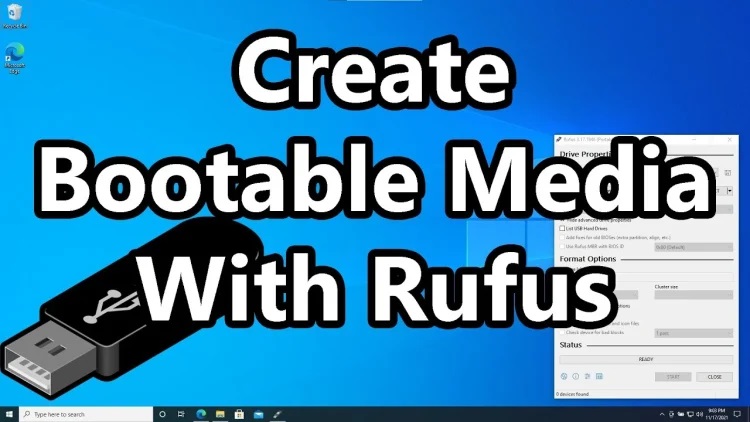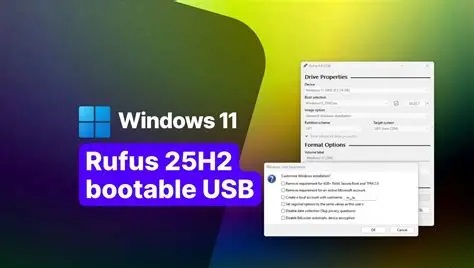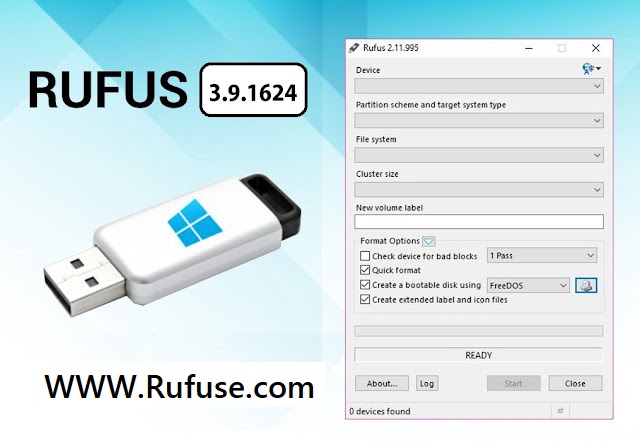When it comes to creating bootable USB drives, one of the most trusted tools available today is Rufus. Over the years, it has become the go-to application for IT professionals, system administrators, and everyday computer users who want to install an operating system from a USB stick. But before you can make use of this handy software, it’s essential to understand the system requirements that your computer must meet in order to run Rufus effectively.
This article explores everything you need to know about Rufus system requirements from the operating system you need, to the hardware specifications, to the permissions and setup required. We’ll also look at some special features Rufus offers and how those may affect what kind of machine you can use it on.
By the end, you’ll have a complete 2200-word guide that ensures you know exactly what’s needed before downloading and running Rufus on your system.
What Is Rufus?
Rufus is a free, open-source utility for Microsoft Windows. Its primary purpose is to format and create bootable USB flash drives, though it offers a range of other helpful features such as checking a device for bad blocks or writing ISO files directly onto portable media.
It was first released in 2011 by developer Pete Batard and has been continually updated to stay compatible with new versions of Windows and new hardware requirements. Unlike heavy applications that require installation, Rufus is portable software, meaning you can download the executable file and run it directly without adding unnecessary files to your operating system.
Because of its size (the program is only a few megabytes), many assume that Rufus has no system requirements at all. While it is true that Rufus is lightweight, it still depends on certain conditions in terms of operating system compatibility, hardware resources, and permissions. Understanding these requirements helps ensure the tool runs smoothly and does not fail in the middle of a critical task like creating a Windows installation USB.
Why Use Rufus?
Before diving into system requirements, it’s worth briefly understanding why Rufus is so popular.
- Speed: Rufus is known to be significantly faster than competing utilities when writing ISO images.
- Reliability: It properly creates bootable USBs for both legacy BIOS and modern UEFI systems.
- Flexibility: It supports multiple file systems (FAT32, NTFS, exFAT, UDF, ReFS).
- Advanced Options: Features like secure boot support, TPM bypass, and persistence for Linux ISOs.
- Free and Open Source: No hidden fees, no ads, and no bloatware.
Because of these benefits, Rufus is widely used for tasks like installing Windows, Linux distributions, or rescue utilities via USB drives.
General System Requirements Overview
To run Rufus, you need:
- A Windows operating system – supported versions vary by Rufus release.
- Basic hardware resources – CPU, RAM, and disk space sufficient for normal operation.
- USB port and drive – to write bootable images.
- Administrator privileges – to access low-level disk functions.
Operating System Requirements
Rufus only runs on Windows. You cannot run Rufus natively on macOS or Linux, though you can use alternatives or run Rufus through virtualization.
Windows Support Timeline
- Rufus 4.x and above (latest versions)
Requires Windows 8 or newer (Windows 8, 8.1, 10, or 11). - Rufus 3.x series
Supported Windows 7 and newer. - Rufus 2.x and earlier
Worked with Windows XP and Vista. - Older versions of Rufus can still be downloaded from the official site if you need compatibility with legacy systems, but they are not actively updated.
Why Support for Windows 7 Was Dropped
As Microsoft discontinued support for Windows 7 in 2020, most developers—including Rufus—eventually dropped compatibility for security and stability reasons. New Rufus releases rely on APIs and system libraries only present in Windows 8 and later.
Hardware Requirements
CPU and Processor Needs
Rufus is extremely lightweight when it comes to CPU usage. Any processor capable of running Windows 8 or newer will be sufficient. There is no official minimum speed or architecture requirement beyond the operating system’s own requirements.
For example:
- A dual-core Intel or AMD processor from the last decade will handle Rufus without issue.
- Even low-power CPUs (Atom, Celeron) can run it smoothly.
The CPU is mainly engaged during data transfer to the USB drive, but the process is more I/O bound than CPU intensive.
RAM Requirements
The memory requirements for Rufus are equally minimal. If your system has enough RAM to run Windows comfortably, it has enough to run Rufus.
- Minimum: 1 GB (sufficient for Windows 8/8.1 32-bit).
- Recommended: 4 GB or more (since modern operating systems and large ISOs benefit from extra memory).
Note: The size of the ISO you are writing does not directly affect Rufus’s memory usage. However, having more RAM helps with multitasking while Rufus is running.
Disk Space Considerations
Rufus itself requires less than 10 MB of disk space. However, you’ll need storage space for:
The ISO file you plan to burn. For example:
- Windows 10 ISO: ~5 GB
- Windows 11 ISO: ~5.5 GB
- Popular Linux distros: 1–4 GB
Temporary working space while Rufus writes to the USB. It’s good practice to have at least 15–20 GB free for smooth operation.
USB Port and Flash Drive Requirements
Since Rufus is designed for bootable USB creation, having a USB flash drive is mandatory.
- USB Port: USB 2.0 is supported, but USB 3.0 or 3.1 is recommended for faster write speeds.
- USB Drive Size: At least 8 GB is recommended for modern operating systems. Some ISOs may fit on 4 GB drives, but Windows ISOs typically require 8–16 GB.
- Quality: Using a reliable, branded USB stick reduces the chance of corruption during the write process.
Software and Permission Requirements
To run Rufus successfully, you need:
- Administrator Privileges: Rufus modifies low-level disk structures (MBR/GPT, boot sectors). Standard user accounts cannot perform these actions. Running Rufus without admin rights may result in errors or limited functionality.
- No Special Drivers: Rufus works with built-in Windows drivers; no additional installations are required.
Target System Considerations (BIOS vs UEFI)
Rufus creates USB drives for both BIOS (legacy boot) and UEFI. Knowing the target system matters because:
- Some UEFI-based systems only boot from FAT32 drives.
- Secure Boot may block unsigned bootloaders.
- Rufus provides options to configure partition schemes (MBR vs GPT) based on the target.
This doesn’t change the system requirements to run Rufus on your computer, but it affects how you must configure Rufus depending on the target.
Special Features and Their Requirements
Secure Boot and TPM Bypass
Newer versions of Rufus offer features like bypassing Windows 11 installation requirements (e.g., TPM 2.0, Secure Boot, RAM requirements). While Rufus allows you to create such installers, the target machine still needs to meet the minimum to run Windows effectively.
File System Options
Rufus supports FAT32, NTFS, exFAT, UDF, and ReFS. Some of these require specific firmware support:
- FAT32 is the safest for maximum compatibility.
- NTFS is often required for ISOs larger than 4 GB.
Handling Large ISOs
f you are writing a very large ISO (over 8 GB), ensure you have:
- A large enough USB drive (16 GB+).
- Sufficient system RAM and disk space for smooth operation.
Practical Scenarios
Creating a Windows 11 Installation USB
- Windows 10 host PC
- Intel i3 processor
- 4 GB RAM
- 16 GB USB 3.0 flash drive
- Admin rights
Creating a Linux Bootable USB
- Windows 8.1 laptop
- 2 GB RAM
- 8 GB USB 2.0 stick
- Works perfectly with Rufus.
These examples show that Rufus adapts to different environments without needing high-end hardware.
Common Problems and Compatibility Issues
- Running Rufus on Windows 7 with latest versions – unsupported; you need Rufus 3.22 or older.
- Using low-quality USB drives – can cause corruption or failed boots.
- UEFI-only systems – may not boot NTFS-formatted drives.
- Insufficient permissions – without admin rights, Rufus cannot function properly.
Best Practices Before Running Rufus
- Always download Rufus from the official website to avoid tampered versions.
- Run the application with administrator privileges.
- Use USB 3.0 drives for speed.
- Verify the checksum of ISO files before writing.
- Back up data, as creating bootable USBs wipes everything on the driv
Comparison Table: Rufus Versions vs Supported OS
| Rufus Version | Supported OS | Status |
|---|---|---|
| 4.x and later | Windows 8+ | Actively updated |
| 3.x series | Windows 7+ | Legacy support |
| 2.x and older | Windows XP, Vista | Obsolete |
Conclusion
Rufus is a small but powerful tool that helps you create bootable USB drives quickly and reliably. To run it, all you really need is a Windows 8 or newer system, a USB drive with enough space, and administrator rights. It doesn’t demand heavy hardware, so even older computers can handle it. As long as you meet these basics, Rufus will work smoothly for installing or repairing operating systems.



